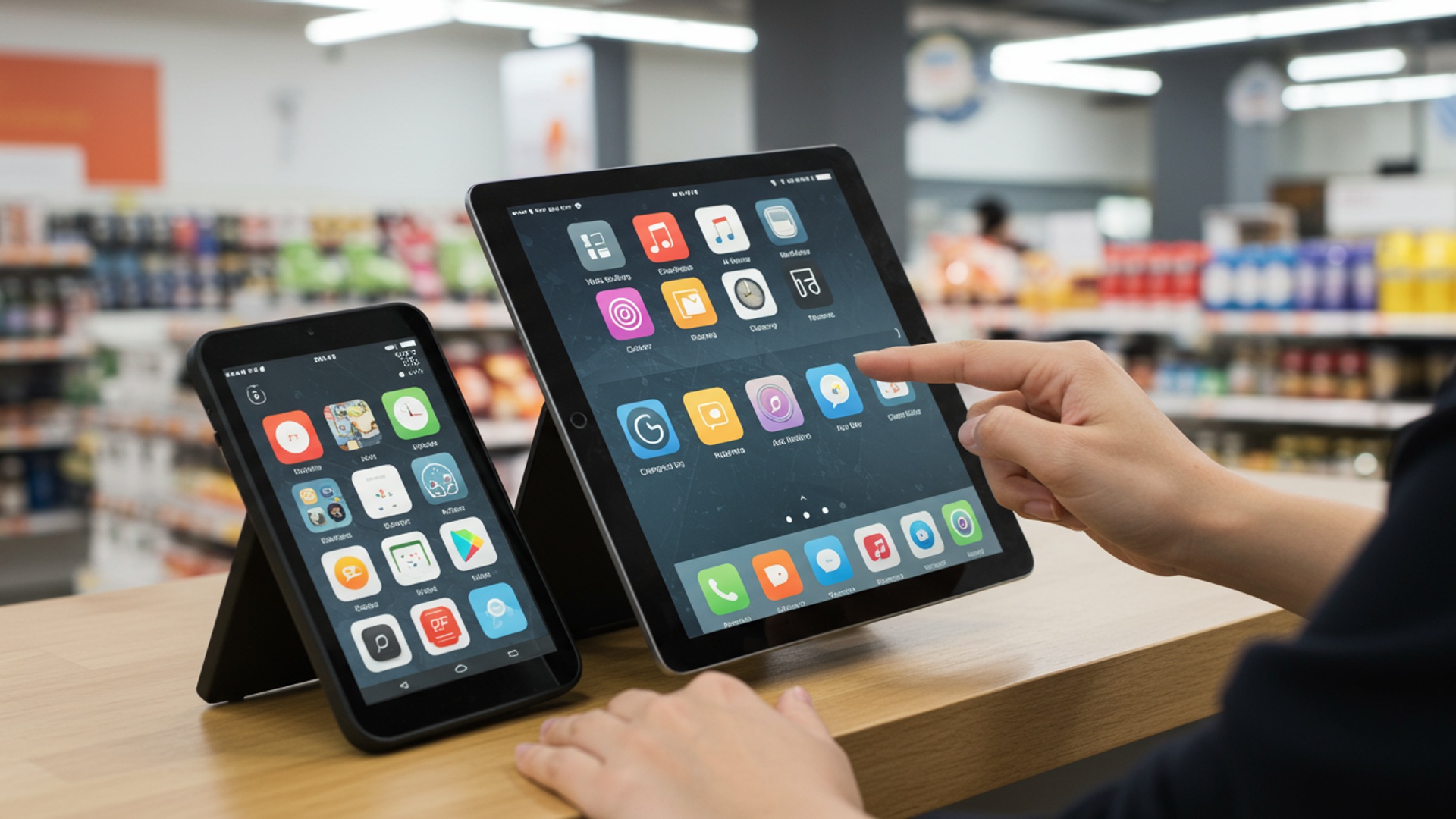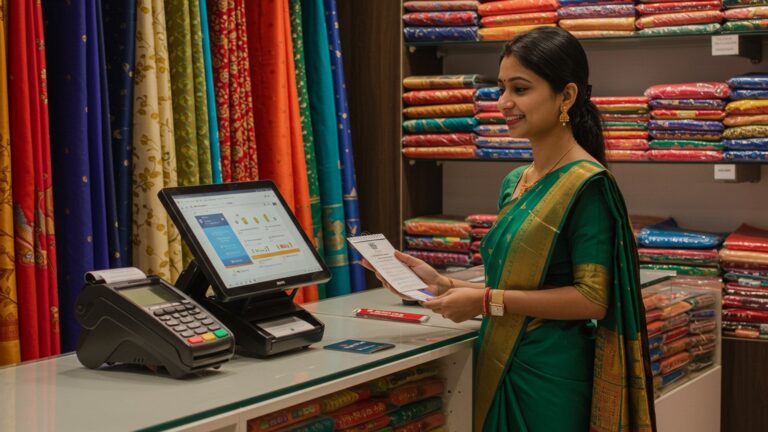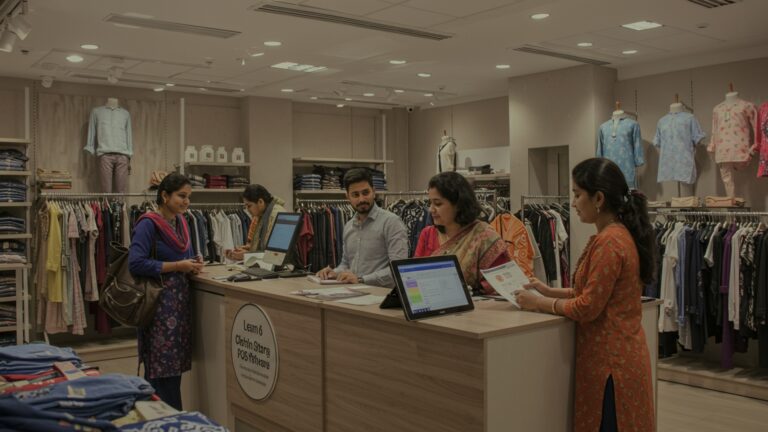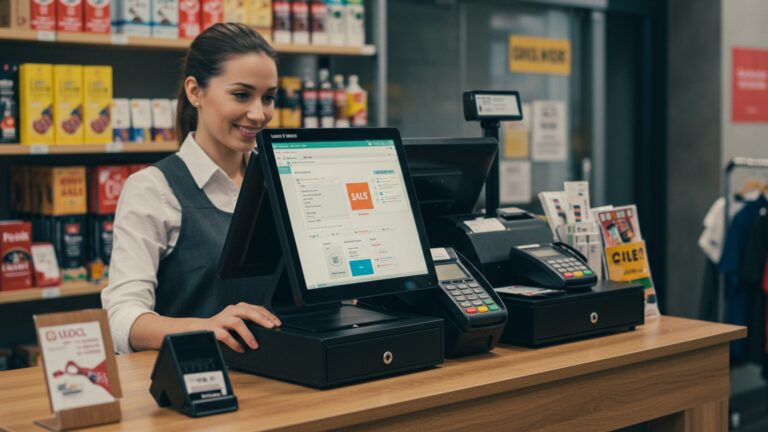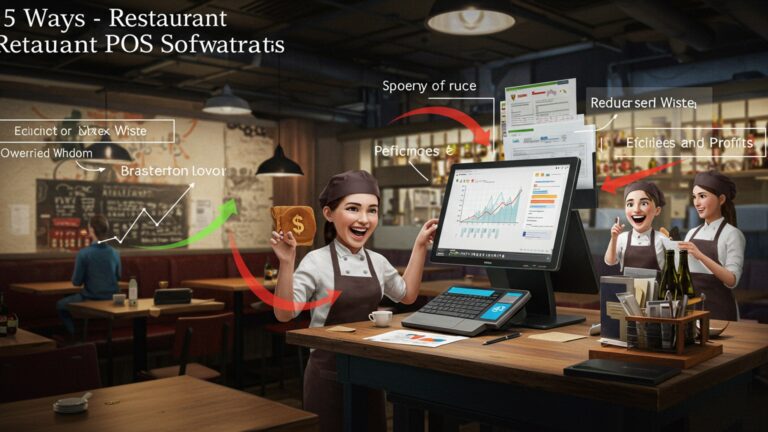Find the 10 Best Android POS Apps to Streamline Your Retail Operations
In today’s dynamic retail landscape, simply processing transactions is no longer enough; businesses demand agile, data-driven solutions to thrive amidst rapidly evolving consumer expectations. The strategic shift towards mobile-first operations and integrated customer experiences makes selecting the best Android POS software a critical decision for operational excellence. Modern systems now seamlessly handle everything from real-time inventory synchronization across multiple sales channels to enabling secure NFC payments and even offering advanced analytics for customer behavior insights. Leveraging a powerful Android POS system empowers retailers to enhance efficiency, reduce operational bottlenecks. elevate the customer journey, directly impacting profitability in a competitive market.
Understanding Android POS Software: A Retail Game Changer
In today’s fast-paced retail environment, efficiency and adaptability are paramount. Traditional cash registers and clunky desktop point-of-sale (POS) systems are increasingly being replaced by more agile, powerful. user-friendly alternatives. Among these, Android-based POS software stands out as a transformative solution for businesses of all sizes. But what exactly is an Android POS system. why is it becoming the go-to choice for streamlining retail operations?
A Point-of-Sale (POS) system is the heart of any retail business. It’s where transactions are processed, sales are recorded. increasingly, where inventory is managed, customer data is collected. employee performance is tracked. Essentially, it’s the central hub for managing your sales floor.
An Android POS system takes this core functionality and integrates it with the versatility and accessibility of the Android operating system. This means that instead of relying on proprietary hardware or complex PC setups, you can run your entire sales operation from a tablet, smartphone, or dedicated Android POS device. This shift leverages the widespread availability and affordability of Android devices, making sophisticated POS capabilities accessible to a broader range of businesses, from pop-up shops to multi-location retail chains.
The beauty of the best android pos software lies in its ability to transform a standard Android device into a powerful sales tool. Imagine a boutique owner managing sales, checking stock levels. processing payments all from a sleek tablet, or a coffee shop barista taking orders and accepting contactless payments using a handheld device. This seamless integration of hardware and software simplifies operations, reduces checkout times. significantly enhances the customer experience. It’s not just about processing payments; it’s about creating a smarter, more connected retail ecosystem.
Why Choose Android for Your Point-of-Sale System?
The decision to adopt an Android POS system for your retail business is often driven by a compelling set of advantages that address common pain points for modern merchants. Here’s why Android is increasingly the platform of choice for the best android pos software solutions:
-
- Cost-Effectiveness
Android devices, from tablets to dedicated POS terminals, are generally more affordable than their Apple iOS or traditional PC counterparts. This lower initial investment makes sophisticated POS technology accessible to small businesses and startups. Moreover, many Android POS apps offer flexible, subscription-based pricing models, including free tiers for basic functionality, further reducing overhead.
-
- Flexibility and Hardware Options
The Android ecosystem boasts an immense variety of hardware. Retailers aren’t locked into specific vendors; they can choose from a wide range of tablets, smartphones. purpose-built Android POS devices. This flexibility extends to peripherals like barcode scanners, receipt printers. cash drawers, which often connect easily via Bluetooth or USB.
-
- User-Friendliness and Familiarity
Millions of people are already familiar with the Android interface from their personal smartphones and tablets. This reduces the learning curve for staff, leading to quicker adoption and fewer training hours. The intuitive touch-screen navigation makes sales processing efficient and less prone to errors.
-
- Integration Capabilities
Android’s open-source nature facilitates robust integration with other business applications. The best android pos software solutions can seamlessly connect with accounting software (like QuickBooks or Xero), e-commerce platforms (like Shopify or WooCommerce), email marketing tools. loyalty programs, creating a unified operational hub. This helps eliminate data silos and ensures consistent details across your business.
-
- Scalability
Whether you’re starting with a single register or planning to expand to multiple locations, Android POS systems are highly scalable. You can easily add more devices, users, or features as your business grows, often without significant upfront costs or complex installations.
-
- Offline Mode Functionality
Many leading Android POS apps offer an offline mode, allowing you to continue processing sales even if your internet connection drops. Transactions are then synced once connectivity is restored, preventing lost sales and ensuring business continuity.
Essential Features to Look for in the Best Android POS Software
When evaluating the best android pos software for your retail business, identifying the core features that align with your operational needs is critical. A robust Android POS app should do more than just process payments; it should be a comprehensive tool that enhances every aspect of your retail operations. Here are the must-have features:
-
- Inventory Management
This is non-negotiable for retail. Look for features that allow you to track stock levels in real-time, manage product variations (size, color), conduct inventory counts, receive new shipments, manage returns. even set reorder points. Advanced systems might include multi-location inventory tracking.
-
- Sales & Transaction Processing
Beyond basic payment processing, the system should handle various transaction types (sales, returns, exchanges, refunds), apply discounts, manage gift cards. allow for split payments. A quick and intuitive checkout flow is essential for customer satisfaction.
-
- Customer Relationship Management (CRM)
Build loyalty by tracking customer purchase history, contact details. preferences. The best android pos software will allow you to offer loyalty programs, send targeted promotions. personalize the shopping experience.
-
- Reporting & Analytics
Data is power. A good POS system provides comprehensive reports on sales trends, popular products, employee performance, peak hours. more. Customizable dashboards and exportable data are highly beneficial for informed decision-making.
-
- Employee Management
Track employee sales performance, manage shifts, set permissions. simplify time clock functions. This feature helps in optimizing staffing and identifying top performers.
-
- Payment Processing
Support for various payment methods is crucial: credit/debit cards (swipe, chip, tap), mobile payments (Apple Pay, Google Pay). cash. Integration with reputable payment processors for secure and efficient transactions is key.
-
- Offline Mode
As mentioned, the ability to operate and process sales even without an internet connection is vital for uninterrupted service, especially in areas with unreliable Wi-Fi or for mobile sales.
-
- Integration with E-commerce
For retailers with an online presence, seamless integration between your physical store POS and your e-commerce platform (e. g. , Shopify, WooCommerce) ensures unified inventory, customer data. sales reporting.
-
- Hardware Compatibility
Ensure the software is compatible with a range of affordable Android devices and can easily connect to essential peripherals like barcode scanners, receipt printers. cash drawers.
-
- Security
PCI compliance, data encryption. secure user access controls are paramount to protect sensitive customer and business details.
Top 10 Best Android POS Apps to Streamline Retail Operations
Choosing the right point-of-sale solution can significantly impact your retail business’s efficiency and profitability. Here’s an in-depth look at 10 of the best android pos software applications, each offering unique strengths tailored to different retail needs.
1. Square POS
-
- Overview
Square POS is a household name in payment processing and a leader in mobile POS solutions. Its Android app is incredibly user-friendly, making it ideal for businesses of all sizes, from sole proprietors to multi-location stores. It’s renowned for its simplicity and robust features.
-
- Key Features
- Free POS app with transparent payment processing fees.
- Comprehensive inventory management.
- Customer directory and loyalty programs.
- Detailed sales reporting.
- Employee management with time tracking and permissions.
- Integrated payment processing with Square hardware (Readers, Stands, Registers).
- Offline mode.
- Integration with Square Online for e-commerce.
- Ideal For
- Key Features
Small businesses, pop-up shops, food trucks, cafes, boutiques. any retail operation prioritizing ease of use and integrated payment solutions.
2. Shopify POS
-
- Overview
Shopify POS is the natural extension for businesses already using Shopify for their e-commerce store. It seamlessly integrates online and offline sales, making it a powerful omnichannel solution for retailers.
-
- Key Features
- Unified inventory, customer. sales data across online and physical stores.
- Robust inventory management with product variants and transfers.
- Customer profiles with purchase history for personalized service.
- Gift cards, discounts. custom payment options.
- Staff management with roles and permissions.
- Advanced reporting on sales, products. staff.
- Supports various Shopify POS hardware.
- Ideal For
- Key Features
Retailers with an existing or planned Shopify e-commerce store, those needing strong omnichannel capabilities. businesses focused on growth.
3. Lightspeed Retail POS
-
- Overview
Lightspeed Retail is a sophisticated, cloud-based POS solution designed for growing and established retail businesses, particularly those with complex inventory needs. It’s known for its powerful inventory management and advanced analytics.
-
- Key Features
- Advanced multi-store inventory management (serial numbers, bundles, variations).
- Vendor and purchase order management.
- Customer profiles and loyalty programs.
- Employee management with performance tracking.
- Detailed reporting and analytics, including insights into inventory performance.
- Integrated payment processing.
- E-commerce integration.
- Ideal For
- Key Features
Mid-to-large size retailers, specialty stores (apparel, electronics, bike shops). businesses requiring robust inventory control and advanced reporting.
4. Clover POS
-
- Overview
Clover offers a range of dedicated Android-based hardware devices (Clover Station, Mini, Flex) bundled with their intuitive POS software. It’s a popular choice for businesses looking for an all-in-one solution with a sleek design and app market for customization.
-
- Key Features
- Customizable app market for specialized functions (loyalty, marketing, accounting).
- Comprehensive sales and payment processing.
- Basic inventory management.
- Customer engagement tools.
- Employee management with permissions and shift tracking.
- Robust reporting and analytics.
- Supports various payment types, including contactless.
- Ideal For
- Key Features
Restaurants, quick-service. diverse retail businesses seeking an integrated hardware/software solution with extensive customization options via its app market.
5. Loyverse POS
-
- Overview
Loyverse offers a free Android POS app, making it an excellent entry point for small businesses and startups. Despite being free, it provides a comprehensive suite of features for sales, inventory. customer management.
-
- Key Features
- Free POS app with optional paid add-ons.
- Basic inventory management with item tracking.
- Sales analytics and reporting.
- Customer loyalty program.
- Employee management.
- Multi-store management (with paid subscription).
- Offline mode.
- Ideal For
- Key Features
Small cafes, boutiques, salons. businesses looking for a cost-effective yet feature-rich Android POS solution without a high upfront investment.
6. Zettle by PayPal
-
- Overview
Formerly iZettle, Zettle by PayPal combines a user-friendly Android POS app with affordable card readers, making it a strong contender for mobile businesses and small retailers who need reliable payment processing.
-
- Key Features
- Easy setup and intuitive interface.
- Accepts all major credit cards and contactless payments.
- Basic product library and inventory tracking.
- Sales reporting.
- Seamless integration with PayPal accounts.
- Offline mode for processing payments.
- Ideal For
- Key Features
Mobile businesses, market traders, pop-up stores. small businesses that prioritize simple payment processing and basic inventory management, especially those already using PayPal.
7. Erply POS
-
- Overview
Erply is a comprehensive retail management system that includes a powerful Android POS. It’s designed for businesses that require advanced inventory management, detailed reporting. multi-store capabilities.
-
- Key Features
- Advanced multi-store inventory management, including kits, assemblies. transfers.
- CRM with customer loyalty and purchase history.
- Employee time clock and commission tracking.
- Robust reporting and analytics.
- Open API for extensive integrations.
- Offline mode.
- Integrated e-commerce platform option.
- Ideal For
- Key Features
Medium to large retail chains, franchises. businesses with complex inventory needs, especially those operating multiple locations.
8. SumUp POS
-
- Overview
Similar to Zettle, SumUp focuses on providing simple, affordable payment solutions with a capable Android POS app. It’s an excellent choice for businesses that need to get started quickly with card payments.
-
- Key Features
- Easy-to-use interface.
- Affordable card readers.
- Accepts all major payment methods, including contactless.
- Basic product catalog and sales tracking.
- Sales reports accessible via the app and dashboard.
- No fixed monthly fees, pay-per-transaction model.
- Ideal For
- Key Features
New businesses, freelancers, small shops. mobile service providers who need a straightforward and cost-effective way to accept card payments.
9. eHopper POS
-
- Overview
eHopper offers a free basic Android POS version with features suitable for small to medium-sized businesses in both retail and quick-service industries. It’s known for its user-friendly interface and robust payment options.
-
- Key Features
- Free basic POS plan available.
- Inventory management.
- Customer management with loyalty features.
- Employee management with time clock.
- Split payments and discounts.
- Offline mode.
- Integrated payment processing.
- Ideal For
- Key Features
Small retail stores, cafes. quick-service restaurants looking for a feature-rich free or affordable Android POS solution.
10. Revel Systems POS
-
- Overview
Revel Systems offers an iPad-based POS primarily. also provides solutions that can run on Android devices for certain functionalities and peripherals. It’s an enterprise-grade solution known for its extensive features, scalability. robust reporting.
-
- Key Features
- Comprehensive inventory management with advanced controls.
- Detailed sales and labor reporting.
- Customer relationship management with loyalty programs.
- Employee management with scheduling and payroll integrations.
- Robust online ordering and delivery management.
- Open API for extensive integrations.
- Offline mode for continuous operations.
- Ideal For
- Key Features
Large single-location businesses, multi-location enterprises. high-volume operations in both retail and hospitality that require an all-encompassing, highly customizable system.
Comparing the Best Android POS Software Options
To help you visualize the distinctions between these top contenders, here’s a comparison table highlighting key aspects of the best android pos software solutions discussed:
| POS App | Target Business Size | Key Inventory Features | CRM & Loyalty | Employee Management | Offline Mode | Pricing Model (General) |
|---|---|---|---|---|---|---|
| Square POS | Small to Medium | Real-time tracking, variants | Yes, customer directory, loyalty | Yes, time tracking, permissions | Yes | Free app, transaction fees |
| Shopify POS | Small to Large (e-commerce focus) | Unified inventory, variants, transfers | Yes, detailed customer profiles | Yes, roles, permissions | Yes | Subscription + transaction fees |
| Lightspeed Retail POS | Medium to Large | Advanced multi-store, serial numbers, bundles | Yes, customer profiles, loyalty | Yes, performance tracking | Yes | Subscription + transaction fees |
| Clover POS | Small to Medium (diverse) | Basic tracking | Yes, engagement tools | Yes, shifts, permissions | Yes | Subscription + transaction fees |
| Loyverse POS | Small | Basic item tracking | Yes, loyalty program | Yes | Yes | Free app, optional paid add-ons |
| Zettle by PayPal | Small, Mobile | Basic product library | No, basic customer data | No (focus on single user) | Yes | Free app, transaction fees |
| Erply POS | Medium to Large | Advanced multi-store, kits, assemblies | Yes, loyalty, history | Yes, time clock, commissions | Yes | Subscription + transaction fees |
| SumUp POS | Small, Mobile | Basic product catalog | No, basic customer data | No (focus on single user) | Yes | Free app, transaction fees |
| eHopper POS | Small to Medium | Yes, item tracking | Yes, loyalty features | Yes, time clock | Yes | Free basic plan, paid tiers |
| Revel Systems POS | Large, Enterprise | Comprehensive, advanced controls | Yes, loyalty, CRM | Yes, scheduling, payroll integration | Yes | Subscription (quote-based) |
Implementing Your Chosen Android POS Solution: Actionable Steps
Selecting the best android pos software is just the first step. Effective implementation is crucial for maximizing its benefits and ensuring a smooth transition. Here are actionable steps to guide you:
-
- Assess Your Specific Needs
Before committing, thoroughly list your business requirements. Do you need multi-location inventory? Robust CRM? Offline capabilities? High-volume processing? This assessment will narrow down your choices significantly. Don’t be swayed by features you won’t use; focus on what solves your unique challenges.
-
- Plan Your Hardware Strategy
Decide whether you’ll use existing Android tablets/phones, invest in dedicated Android POS terminals, or a mix. Consider peripherals: barcode scanners, receipt printers, cash drawers. card readers. Ensure compatibility with your chosen software. For example, a small café might use a tablet and a Bluetooth card reader, while a larger retail store might opt for a dedicated terminal with integrated peripherals.
-
- Data Migration and Setup
If you’re transitioning from an older system, plan how you’ll migrate your product catalog, customer database. historical sales data. Most modern POS apps offer import tools (e. g. , CSV uploads). Take the time to accurately input product details, pricing. inventory counts.
-
- Configure Settings and Integrations
Customize your POS app to fit your business logic. Set up tax rates, discount rules, user permissions for staff. any specific payment methods. Integrate with your accounting software (e. g. , QuickBooks, Xero) and e-commerce platform (e. g. , Shopify) from the outset to ensure seamless data flow.
-
- Staff Training
This is paramount. Even the most intuitive best android pos software requires proper training. Conduct hands-on sessions, create cheat sheets. ensure every team member understands how to process sales, manage returns, apply discounts. use inventory lookup features. A well-trained team ensures smooth operations and better customer service.
-
- Pilot Test and Go Live
Before a full launch, run a pilot test. Use the system for a few days in a low-traffic period, or even simulate transactions. This helps identify any kinks or areas needing adjustment. Once confident, officially go live. have a backup plan (e. g. , a simple manual system) ready for the first few days, just in case.
-
- Continuous Optimization
Your POS system isn’t a “set it and forget it” tool. Regularly review your sales reports and analytics to identify trends, optimize inventory. refine your customer strategies. Stay updated with software updates, as they often bring new features and security enhancements that can further streamline your operations.
Real-World Impact: Case Studies of Android POS Success
The practical application of the best android pos software can be seen in diverse retail environments, transforming efficiency and customer engagement. Here are a few illustrative examples:
-
- “The Urban Plant” Boutique
Sarah, the owner of a small, trendy plant shop called “The Urban Plant,” struggled with manual inventory tracking and slow checkout times. After implementing Square POS on an Android tablet, she saw immediate improvements. Her staff could quickly look up plant care tips on the tablet while assisting customers, process sales in seconds with an attached card reader. automatically update inventory. Sarah also used Square’s built-in CRM to track customer preferences for specific plant types, allowing her to send targeted promotions and nurture repeat business. The intuitive interface meant her new hires were productive on the register within an hour.
-
- “Global Spices” International Market
A bustling international grocery store, “Global Spices,” needed a more robust system than their outdated cash registers. They chose Lightspeed Retail POS running on dedicated Android terminals. The biggest impact was on inventory management. With thousands of unique products from around the world, Lightspeed’s advanced features allowed them to track stock levels by origin, manage expiration dates. automate reorder alerts for their niche suppliers. Their employees could also use handheld Android devices to conduct quick inventory counts directly on the floor, vastly reducing manual errors and out-of-stock situations.
-
- “Wanderlust Gear” Outdoor Outfitter
This outdoor equipment store often participated in weekend pop-up events and trade shows. Their existing desktop POS was too cumbersome for mobile sales. By adopting Zettle by PayPal on a rugged Android smartphone with a mobile card reader, they gained the flexibility to process sales anywhere. They could set up a temporary shop in minutes, accept various payment types securely. have all transaction data sync back to their main system once online. This enabled them to capture sales opportunities they previously missed due to logistical limitations.
These examples illustrate how the right Android POS solution isn’t just about processing payments; it’s about empowering businesses with tools to manage inventory, engage customers. adapt to the ever-evolving retail landscape, ultimately driving growth and enhancing the overall customer experience.
Conclusion
Navigating the myriad of Android POS apps can seem daunting. the core takeaway remains clear: the right system is a powerful catalyst for retail success. From my personal observation, businesses that genuinely thrive leverage these tools not just for transactions. as comprehensive data hubs – tracking inventory, analyzing sales trends. fostering customer loyalty. Remember, the best app isn’t necessarily the most feature-rich; it’s the one that seamlessly integrates with your specific operational flow, whether you’re managing a bustling clothing boutique or a multi-outlet electronics store. To truly streamline your retail operations, don’t just pick one from the list; critically evaluate its scalability, offline capabilities, and, crucially, its post-sales support. A great tip I always share is to involve your front-line staff in the demo process; their practical insights are invaluable. As the retail landscape continues its rapid digital transformation, fueled by mobile-first solutions and cloud intelligence, embracing a robust Android POS is no longer an option but a strategic imperative. Take this actionable step today to future-proof your business and propel it towards sustained growth and efficiency. For more insights on selecting the right tools, you might find value in exploring Discover the Top 7 Android POS Software Solutions for Your Business Needs.
More Articles
How to Choose and Implement Android POS for Restaurants in India Effectively
Learn How 10 Mobile POS Billing Apps Can Boost Grocery Efficiency
7 Essential POS Software Features for Clothing Stores in India
Discover the Top 7 POS Software for Grocery Stores in India
7 Best POS Software Options to Boost Your Business Efficiency
FAQs
What exactly is an Android POS app and why would my retail store need one?
An Android POS (Point of Sale) app essentially transforms your Android device, like a tablet or smartphone, into a complete sales register. Instead of traditional cash registers, you can process transactions, manage inventory. track sales directly from your device. Retail stores need them to modernize operations, speed up checkout, get better insights into their business performance. offer a more flexible shopping experience.
How do these apps actually help streamline retail operations?
They streamline things in several key ways! For instance, they automate inventory tracking, so you know exactly what’s in stock and when to reorder. They also speed up customer checkout with quick payment processing, can integrate with loyalty programs. provide real-time sales data. This all helps with better decision-making, reduces manual errors. frees up staff for other tasks.
What key features should I look for when choosing an Android POS app?
You’ll want features like robust inventory management, secure payment processing (credit cards, mobile payments), customer relationship management (CRM) tools, comprehensive sales reporting and analytics, employee management capabilities. multi-store support if you have more than one location. Offline functionality can also be a lifesaver if your internet connection isn’t always reliable.
Are these Android POS systems suitable for all types of retail businesses, big or small?
Absolutely! Many Android POS apps are highly scalable and flexible. You can find solutions tailored for small boutiques, coffee shops, food trucks, or even larger multi-location retail chains. The key is to choose an app that matches your specific needs, industry. growth plans, as some are more specialized than others.
Is it complicated or expensive to get started with one of these Android POS apps?
Not usually! One of the big advantages of Android POS apps is their ease of setup and often lower cost compared to traditional, dedicated POS systems. You typically just download the app, connect a few affordable peripherals like a card reader or receipt printer. you’re good to go. Many offer free trials or affordable monthly subscription models, making them accessible for various budgets.
Can I process different types of payments using these apps?
Yes, definitely. Most modern Android POS apps support a wide range of payment methods. This typically includes EMV chip cards, magstripe cards, contactless payments like Apple Pay and Google Pay. often even gift cards or store credit. This flexibility makes checkout much smoother for your customers and ensures you don’t miss a sale.
What’s the best way to pick the right Android POS app for my specific retail business?
To find the best fit, first list your essential needs and any ‘nice-to-have’ features. Consider your budget, the size of your inventory, the number of employees. whether you need multi-store support or specific integrations. Read reviews from other retailers, compare features of the top contenders. crucially, take advantage of any free trials offered by the apps. This hands-on experience will show you which one feels most intuitive and powerful for your daily operations.

